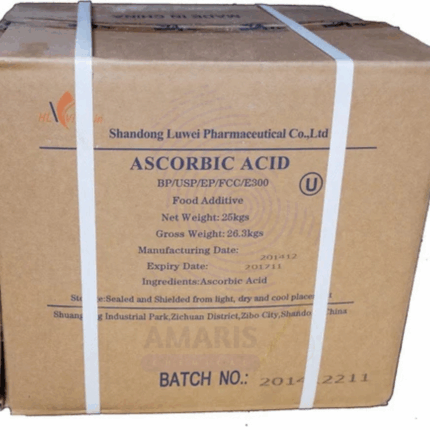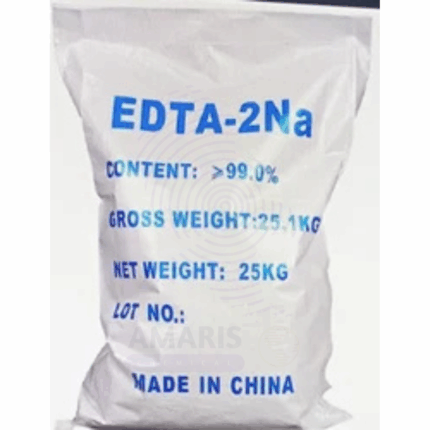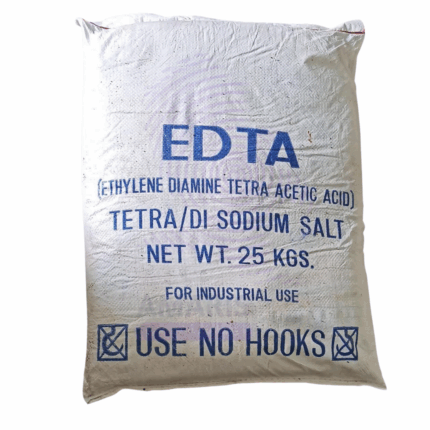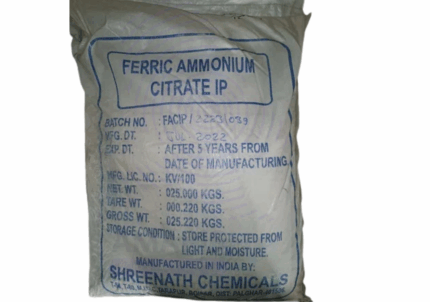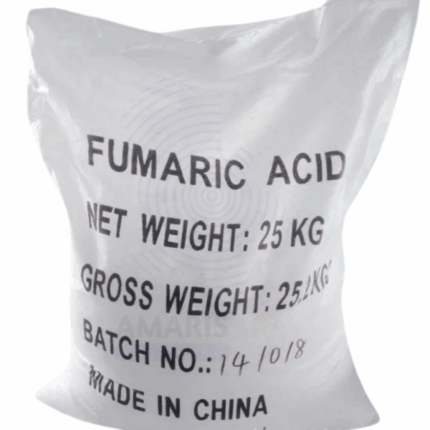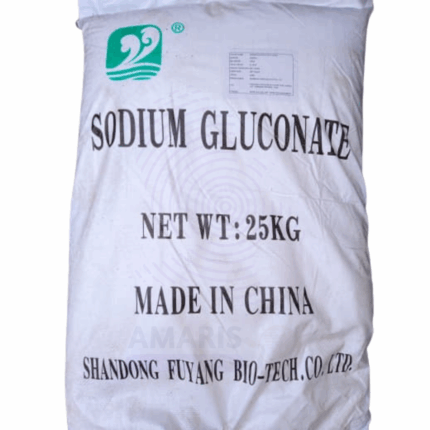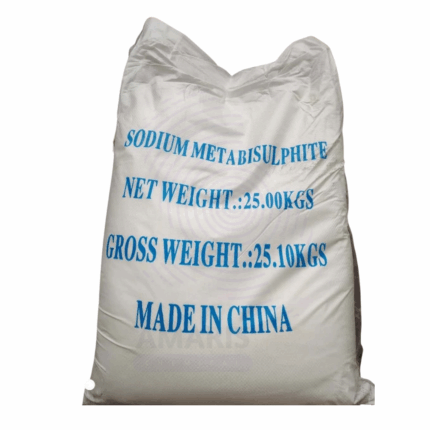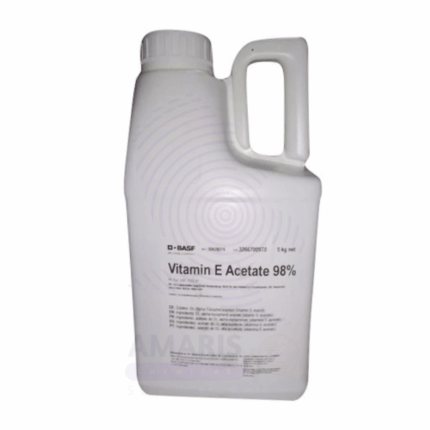Back to products
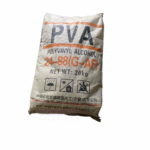

Polyvinyl Alcohol
$ 2.25 Original price was: $ 2.25.$ 2.14Current price is: $ 2.14.
Citric Acid Monohydrate
$ 2.24 Original price was: $ 2.24.$ 2.12Current price is: $ 2.12.
Whatsapp Order
Citric Acid Monohydrate is a white, crystalline powder or granule form of citric acid containing one molecule of water per molecule of acid. It is a natural organic acid commonly derived from citrus fruits or produced by fermentation processes. Citric Acid Monohydrate is widely used as an acidulant, preservative, and chelating agent in various industries. Compared to the anhydrous form, it has a slightly lower acid concentration due to the water molecule but offers excellent solubility and stability. It is prized for its sour flavor, buffering capacity, and ability to bind metal ions, making it indispensable in food, pharmaceutical, cosmetic, and industrial applications.
Categories: Acidulants, Antioxidants, Chelating Agents
Tags: Chelating agent in industrial applications, Citric acid monohydrate, Cosmetic and personal care formulations, Flavor Enhancer, Food additive, Food and beverage preservative, Organic Acid, Pharmaceutical ingredient, White crystalline granules
Description
Table of Contents
Toggle
Citric Acid Monohydrate
Primary Uses
- Food & Beverage Industry
- Used as an acidulant and flavor enhancer in soft drinks, candies, fruit juices, and dairy products.
- Functions as a preservative by chelating metals and preventing oxidation, thus extending shelf life.
- Acts as a pH regulator and buffering agent in food processing.
- Incorporated in effervescent tablets and powders to provide controlled release of carbon dioxide when reacted with bicarbonates.
- Pharmaceuticals & Nutraceuticals
- Employed as a pH adjuster in oral syrups, suspensions, and effervescent dosage forms.
- Serves as a stabilizer for active pharmaceutical ingredients sensitive to alkaline conditions.
- Used to enhance mineral absorption by chelating metal ions in vitamin and mineral supplements.
- Cosmetics & Personal Care
- Added as a pH adjuster in skincare products, shampoos, and bath additives.
- Acts as an antioxidant synergist by binding metal ions that can catalyze product degradation.
- Utilized in mild exfoliating products due to its gentle acidity and natural origin.
- Industrial & Cleaning Applications
- Used as a biodegradable chelating agent and scale remover in detergents and cleaning agents.
- Applied in metal surface treatment and as a descaling agent for boilers and cooling systems.
- Functions as a buffering agent in chemical manufacturing processes and laboratory reagents.
Secondary Uses
- Agriculture
- Used in micronutrient fertilizers and foliar sprays to improve metal ion availability to plants.
- Water Treatment
- Employed as a sequestrant to control hardness and prevent precipitation of calcium and magnesium salts.
- Textile Industry
- Utilized in dyeing and finishing to adjust pH and enhance color consistency and brightness.
- Food Packaging
- Incorporated in active packaging materials for its antimicrobial and antioxidant properties.
KEY PRODUCT FEATURES
1. Basic Identification Attributes
- Chemical Name (IUPAC): 2-hydroxypropane-1,2,3-tricarboxylic acid monohydrate
- Common/Trade Name: Citric Acid Monohydrate
- CAS Number: 5949-29-1
- HS Code: 2918.14.00
- Molecular Formula: C₆H₈O₇·H₂O
- Synonyms: Citric Acid Monohydrate; 2-hydroxy-1,2,3-propane-tricarboxylic acid monohydrate
2. Physical & Chemical Properties
- Physical State: White crystalline powder or granules
- Color & Odor: White; odorless or faintly acidic odor
- Melting Point: 100–103°C (dehydrates before melting)
- Solubility: Highly soluble in water (~59 g/100 mL at 20°C); insoluble in alcohol and ether
- pH (1% solution): ~2.2 (acidic)
- Stability: Stable under normal conditions; hygroscopic (absorbs moisture)
3. Safety & Hazard Attributes
- Hazard Class (GHS): Generally regarded as safe; irritant in concentrated form
- NFPA Ratings: Health 2, Flammability 0, Reactivity 0
- Exposure Limits: No established OSHA PEL; avoid inhalation of dust
- Toxicity: Low toxicity; GRAS status for food use
- Reactivity: Stable; reacts with strong bases and oxidizers
4. Storage & Handling Attributes
- Storage Conditions: Store in a cool, dry, well-ventilated place, away from moisture and incompatible materials
- Container Type: Sealed polyethylene or fiber drums, food-grade bags
- Shelf Life: Typically 3–5 years if stored properly
- Special Handling: Minimize dust formation; use PPE such as masks and gloves during handling
5. Regulatory & Compliance Attributes
- FDA Status: GRAS for food use (21 CFR §184.1033)
- Food Additive Code (EU): E330
- REACH Status: Registered
- Transportation: Not classified as hazardous
- Waste Disposal: Follow local regulations; biodegradable
6. Environmental & Health Impact
- Ecotoxicity: Low environmental impact; biodegradable and non-toxic at typical use levels
- Persistence: Readily biodegradable
- Bioaccumulation: Not expected to bioaccumulate
- Carcinogenicity/Mutagenicity: Not classified as carcinogenic or mutagenic
- Biodegradability: Rapidly biodegradable
SAFETY HANDLING PRECAUTIONS
Safety Handling Precautions
- PPE: Use dust mask, gloves, and goggles when handling powder
- Handling: Avoid dust inhalation and prolonged skin contact
- Storage: Keep containers tightly sealed and protected from moisture
- Hygiene: Wash hands after handling; no eating or drinking in work areas
First Aid Measures
- Inhalation: Move to fresh air; seek medical attention if irritation persists
- Skin Contact: Wash affected area with soap and water; seek medical care if irritation develops
- Eye Contact: Rinse eyes thoroughly with water for at least 15 minutes; seek medical advice if irritation continues
- Ingestion: Generally safe in small amounts; rinse mouth and drink water; seek medical attention if large quantities ingested
Firefighting Measures
- Fire Hazards: Non-flammable; may decompose at high temperatures releasing carbon oxides
- Extinguishing Media: Water spray, foam, dry chemical, or carbon dioxide extinguishers
- Special Precautions: Use protective gear and self-contained breathing apparatus if involved in fire
- Decomposition Products: Carbon dioxide, carbon monoxide
Related products
Ascorbic Acid
Ascorbic Acid, commonly known as Vitamin C, is a water-soluble vitamin and potent antioxidant essential for collagen synthesis, immune function, and protection against oxidative stress. It is widely used as a nutritional supplement, food preservative, and additive to enhance shelf life and nutritional value. Naturally present in citrus fruits and various vegetables, ascorbic acid is also important in pharmaceutical, cosmetic, and animal feed industries due to its health benefits and preservative qualities.
Disodium Salt (EDTA)
Disodium Salt (EDTA), (Ethylenediaminetetraacetic acid disodium salt) is a widely used chelating agent that binds metal ions to form stable complexes. It effectively sequesters divalent and trivalent metal ions such as calcium, magnesium, iron, and heavy metals, preventing their participation in unwanted chemical reactions. This property makes it essential in a wide range of industrial, pharmaceutical, cosmetic, agricultural, and water treatment applications. The disodium salt form offers excellent water solubility and is often used in neutral to slightly alkaline systems.
Ferric Ammonium Citrate
Ferric Ammonium Citrate is a dark green to black crystalline or granular inorganic compound composed of iron, ammonium ions, and citrate ions. It is a complex salt of citric acid with ferric iron (Fe³⁺) and ammonium. This compound is highly soluble in water, forming a greenish solution, and is widely utilized as a source of iron in various chemical, pharmaceutical, photographic, and food applications. It acts as a mild oxidizing agent and an iron supplement, valued for its bioavailability and ease of incorporation into formulations. Ferric Ammonium Citrate is typically available in different formulations distinguished by their water and ammonium content, such as green and brown types.
Fumaric Acid
Fumaric Acid is a naturally occurring dicarboxylic acid characterized by its white crystalline powder form and a slightly acidic taste. It is an unsaturated organic acid with the chemical formula C4H4O4 and is an intermediate in the Krebs cycle in biological systems. Fumaric Acid is commonly found in various plants and fungi and is commercially produced by isomerization of maleic acid or by fermentation. It is widely used in the food, pharmaceutical, chemical, and polymer industries due to its acidulant, antioxidant, and crosslinking properties.
Sodium Gluconate
Sodium Gluconate is a white, crystalline powder derived from gluconic acid and sodium salt. It is highly water-soluble, biodegradable, and non-toxic, widely used as a chelating agent, sequestrant, and buffering agent across various industries. Sodium Gluconate is favored for its excellent ability to bind metal ions, improve cleaning efficiency, and stabilize formulations. It finds extensive applications in construction, water treatment, food, pharmaceuticals, cosmetics, and textiles.
Sodium Metabisulphite
Sodium Metabisulphite is a white crystalline powder widely used as an antioxidant, disinfectant, and preservative. It dissolves readily in water, releasing sulfur dioxide, which acts as a powerful antimicrobial and antioxidant agent. This chemical finds broad applications in food processing, water treatment, pharmaceuticals, and industrial manufacturing to prevent spoilage, control microbial growth, and protect equipment from corrosion.
Sodium Sulphite (Blue)
Sodium Sulphite Blue is a white to bluish-white crystalline powder with the chemical formula Na₂SO₃. The “Blue” grade indicates a specific industrial quality often containing minor additives or impurities, used primarily in water treatment and chemical industries. It acts as an effective oxygen scavenger, reducing agent, and preservative. This 25kg packaged product is highly soluble in water, forming alkaline solutions, and is widely used in pulp and paper, water treatment, textile, and photographic industries.
Vitamin E Acetate Oily
Vitamin E Acetate Oily, also known as DL-Alpha-Tocopheryl Acetate, is a synthetic, oil-soluble form of Vitamin E with high purity and exceptional oxidative stability. This viscous liquid is ideal for applications requiring direct incorporation into oil-based systems such as soft gel capsules, cosmetic formulations, and fortified edible oils. Its stability under processing and storage conditions makes it a preferred form of Vitamin E for nutritional, pharmaceutical, cosmetic, and food-grade applications.


 Preservatives(food)
Preservatives(food) Flavor Enhancers
Flavor Enhancers Acidulants
Acidulants Sweeteners
Sweeteners Antioxidants
Antioxidants Colorants(food)
Colorants(food) Nutraceutical Ingredients (food)
Nutraceutical Ingredients (food) Nutrient Supplements
Nutrient Supplements Emulsifiers
Emulsifiers
 Collectors
Collectors Dust Suppressants
Dust Suppressants Explosives and Blasting Agents
Explosives and Blasting Agents Flocculants and Coagulants
Flocculants and Coagulants Frothers
Frothers Leaching Agents
Leaching Agents pH Modifiers
pH Modifiers Precious Metal Extraction Agents
Precious Metal Extraction Agents
 Antioxidants(plastic)
Antioxidants(plastic) Colorants (Pigments, Dyes)
Colorants (Pigments, Dyes) Fillers and Reinforcements
Fillers and Reinforcements Flame Retardants
Flame Retardants Monomers
Monomers Plasticizers
Plasticizers Polymerization Initiators
Polymerization Initiators Stabilizers (UV, Heat)
Stabilizers (UV, Heat)
 Antifoaming Agents
Antifoaming Agents Chelating Agents
Chelating Agents Coagulants and Flocculants
Coagulants and Flocculants Corrosion Inhibitors
Corrosion Inhibitors Disinfectants and Biocides
Disinfectants and Biocides Oxidizing Agents
Oxidizing Agents pH Adjusters
pH Adjusters Scale Inhibitors( water)
Scale Inhibitors( water)
 Antioxidants(cosmetic)
Antioxidants(cosmetic) Emollients
Emollients Fragrances and Essential Oils
Fragrances and Essential Oils Humectants
Humectants Preservatives
Preservatives Surfactants(cosmetic)
Surfactants(cosmetic) Thickeners
Thickeners UV Filters
UV Filters
 Fertilizers
Fertilizers Soil Conditioners
Soil Conditioners Plant Growth Regulators
Plant Growth Regulators Animal Feed Additives
Animal Feed Additives Biostimulants
Biostimulants Pesticides (Herbicides, Insecticides, Fungicides)
Pesticides (Herbicides, Insecticides, Fungicides)
 Active Pharmaceutical Ingredients (APIs)
Active Pharmaceutical Ingredients (APIs) Excipients
Excipients Solvents(pharmaceutical)
Solvents(pharmaceutical) Antibiotics
Antibiotics Antiseptics and Disinfectants
Antiseptics and Disinfectants Vaccine Adjuvants
Vaccine Adjuvants Nutraceutical Ingredients (pharmaceutical)
Nutraceutical Ingredients (pharmaceutical) Analgesics & Antipyretics
Analgesics & Antipyretics
 Analytical Reagents
Analytical Reagents Solvents(lab)
Solvents(lab) Chromatography Chemicals
Chromatography Chemicals Spectroscopy Reagents
Spectroscopy Reagents microbiology-and-cell-culture-reagents
microbiology-and-cell-culture-reagents Molecular Biology Reagents
Molecular Biology Reagents Biochemical Reagents
Biochemical Reagents Inorganic and Organic Standards
Inorganic and Organic Standards Laboratory Safety Chemicals
Laboratory Safety Chemicals Specialty Laboratory Chemicals(Special Laboratory Equipment)
Specialty Laboratory Chemicals(Special Laboratory Equipment)
 Demulsifiers
Demulsifiers Hydraulic Fracturing Fluids
Hydraulic Fracturing Fluids Scale Inhibitors(oil)
Scale Inhibitors(oil) Surfactants(oil)
Surfactants(oil) Drilling Fluids
Drilling Fluids
 Dyes and Pigments
Dyes and Pigments Bleaching Agents
Bleaching Agents Softening Agents
Softening Agents Finishing Agents
Finishing Agents Antistatic Agents
Antistatic Agents
 Admixtures
Admixtures Waterproofing Agents
Waterproofing Agents Sealants and Adhesives
Sealants and Adhesives Curing Compounds
Curing Compounds Concrete Repair Chemicals
Concrete Repair Chemicals Anti-Corrosion Coatings
Anti-Corrosion Coatings
 Surfactants(cleaning)
Surfactants(cleaning) Builders
Builders Enzymes
Enzymes Solvents (Cleaning)
Solvents (Cleaning) Fragrances
Fragrances
 Electronic Chemicals
Electronic Chemicals Catalysts
Catalysts Lubricants
Lubricants Photographic Chemicals
Photographic Chemicals Refrigerants
Refrigerants Automotive chemicals
Automotive chemicals Pyrotechnic Chemicals
Pyrotechnic Chemicals
 Biodegradable Surfactants
Biodegradable Surfactants Bio-based Solvents
Bio-based Solvents Renewable Polymers
Renewable Polymers Carbon Capture Chemicals
Carbon Capture Chemicals Wastewater Treatment Chemicals
Wastewater Treatment Chemicals
 Pigments
Pigments Solvents(paint)
Solvents(paint) Specialty Coatings
Specialty Coatings Binders/Resins
Binders/Resins Additives
Additives Driers
Driers Anti-Corrosion Agents
Anti-Corrosion Agents Functional Coatings
Functional Coatings Application-Specific Coatings
Application-Specific Coatings
 Fresh Herbs
Fresh Herbs Ground Spices
Ground Spices Whole Spices
Whole Spices Spice Blends
Spice Blends Dried Herbs
Dried Herbs
 Leavening Agents
Leavening Agents Dough Conditioners
Dough Conditioners Flour Treatments
Flour Treatments Fat Replacers
Fat Replacers Decoratives
Decoratives Preservatives(baking)
Preservatives(baking)
 Plasticizers & Softeners
Plasticizers & Softeners Reinforcing Agents
Reinforcing Agents Adhesion Promoters
Adhesion Promoters Vulcanizing Agents
Vulcanizing Agents Antidegradants
Antidegradants Blowing Agents
Blowing Agents Fillers & Extenders
Fillers & Extenders Accelerators & Retarders
Accelerators & Retarders



